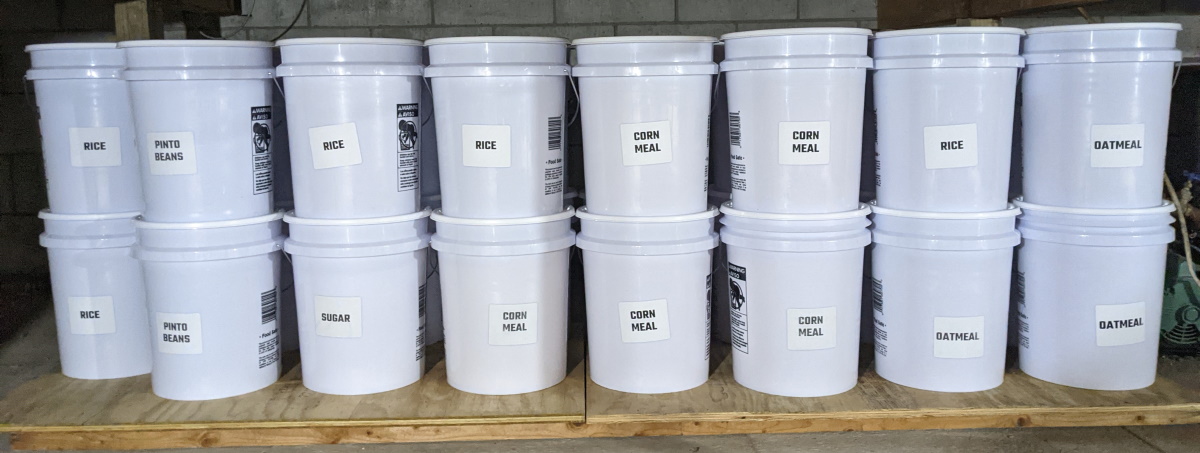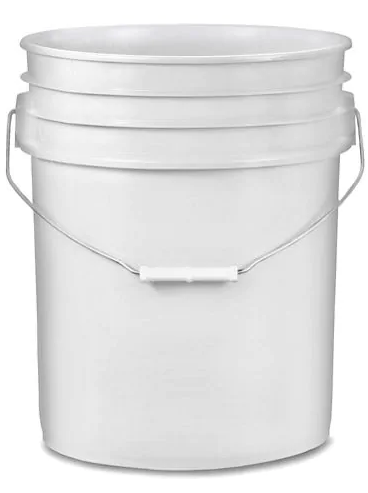
Survival: Food
One of the most important, and yet oft overlooked, pieces of an effective preparedness plan is food. There are far more exciting things to do like collect guns and ammo, buy books on homesteading, or even play with all kinds of modern amateur radios. Piling up buckets of rice and beans just isn’t much fun. But go a few days without anything to eat and you will suddenly have a new perspective on the importance of stocking up food.
In the near future, we will address the topic of growing your own food from seedlings to a plentiful harvest, but the main topic right now is the purchase and storage of food that has already been grown. That said, if you can find fruit or vegetable seeds in your stores now, pick up several packets and keep them in a cool, dry place. We’ll make use of them down the road.
The Need for Calories
The average person consumes about 2,000 Calories each and every day. The Army has a handy calculator that you can use to gauge more precisely how many Calories you may need. A man who weighs 185 pounds, in the middle of winter, needing to work heavily to keep firewood moving, animals fed and milked, and machines running, may need as many as 5,200 Calories to avoid losing weight!
If you figure your family will need on average 3,300 Calories a day, that equates to roughly 750 pounds of food a year per person. So how much would you need to store up to keep your family of four going for a year? 3,000 pounds of food. That is a lot of food, a lot of money, and a lot of space!
Long Term Food Stores
Most likely, many of us will not find ourselves without any access to food for more than a few days at a time and you should have enough to eat in your pantry to cover that. Should the power go out for a few days and local shopping centers run low on supplies, you’ll be covered. But what if a major geopolitical event brings an end to trucking in your area and you could be without grocery stores for a couple months? This is where you should focus your purchasing efforts.
Ready-to-Eat
There are two types of food that you can purchase in bulk: ready-to-eat, and raw goods. Some good ready-to-eat options might include:
- Spaghetti and sauce, or other pasta
- Oatmeal
- Canned soups, vegetables, and fruits
- Pancake mix (just add water style)
- Boxed food like macaroni and cheese or stuffing
- Canned tuna and chicken
- Peanut butter
- Baked beans
Raw Goods
Raw goods take a bit more prep work and may need to be mixed with other ingredients that you may or may not be able to purchase in an emergency situation. That said, these items can be stored safely for years and provide a great source of Calories.
- Flour or whole wheat (if you have a mill)
- Rice
- Cornmeal
- Oats
- Beans (black beans, navy beans, pinto beans)
Valuable Extras
By themselves, these may not be the most appealing options (especially if you have young kids), but they will provide sustenance and keep you from starving to death. You can greatly improve the flavor and presentation of these foods as well by keeping a few other staples on hand as part of your food storage plan:
- Salt
- Sugar (white and brown)
- Herbs and spices
- Chicken and beef bullion
- Freeze dried fruits and vegetables
- Canned tomatoes
- Syrup
- Vegetable oil
- Vegetable shortening
By keeping recipes on hand that make use of items you’ve stocked up, you can know what you need to purchase and also know that you will have more options than a bowl of rice and beans every night. We have begun compiling a list of simple recipes that you can print off and keep with your long-term storage food. We will continue to add to the list over time, so keep your eyes peeled.
One last important note: Don’t just stash away thousands of pounds of food and hope that when the time comes, you will know how to use something like cornmeal or flour. Practice the skills now. Get a tortilla press and boil some rice and fry up some canned chicken, and see if you can make a meal of burritos using just the supplies you have on hand. Also, as much as possible, start working your supplies into your everyday living. Use the food you purchase but restock your shelves. This will guarantee you’re experienced at using your food and will also keep your shelves fresh.

